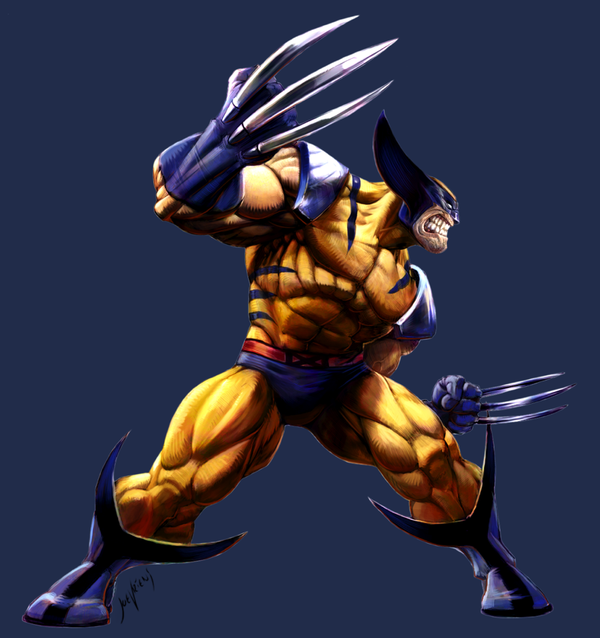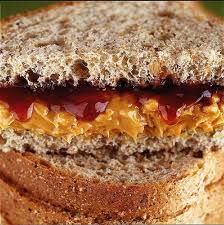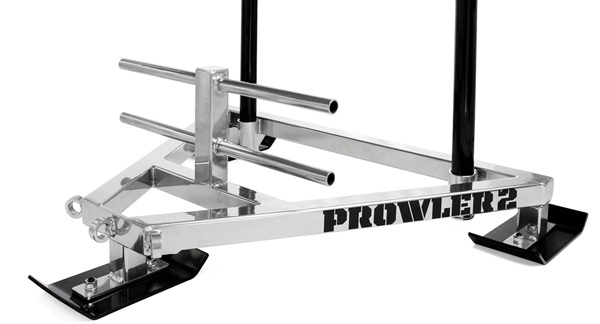Q&A: Strength/Power vs Hypertrophy/Size?
Pardon my ignorance, but what is the difference between training for strength/power and for hypertrophy/size? It seems that if one becomes strong enough to squat 400 pounds or bench press 300, they are not going to be small and weak?
J – Thanks for the question. This is actually a great question that I don’t believe many people ever consider. It also touches on some of the fine points of programming and why – in my (not-so-humble) opinion – SAPT really excels at program design and getting our clients to their goals.
Your assumption that if someone is able to squat X and bench Y they will not be small and weak is basically correct. BUT, to get them to those goals you have to begin complementing the heavy compound or main movements with accessory and supplemental work that will effectively support the needed growth to hit those heavier maxes. When I say growth, I am referring to both neural growth/adaptations and actual muscle hypertrophy.
If one were to stick with a strict maximum strength development program they would be missing out on the strength and hypertrophy spectrum. The result would be very little hypertrophy because the volume will be so low… even though the weights will be very heavy. The primary result will be neural adaptations. As a side note, this is the style training I use with my college teams when I only want performance improvements and very little gain in weight or size: maximum strength, strength-speed, speed-strength, and speed methods.
On the other hand, if you begin to carefully combine the maximum strength work with some hypertrophy and strength set/rep ranges then you will be able to simultaneously (and very efficiently) gain the needed muscle to support the improved neural functions.
Hope this answer helps clear things up!
3 Awesome Things I've Learned...
I’ve been in the strength and conditioning field for a very short time; luckily I have luck on my side and ended up surrounded by very smart people. Whether it’s coaching, watching my colleagues coach, reading, or training myself I consistently learn something new every day. With that said here are 3 awesome things I’ve learned both as a coach and as someone who trains.
- Keep things simple…
If you’re an inexperienced lifter or you’re dealing with an inexperienced athlete don’t try and get to crazy; you’re not and their not as advanced as you think. Squatting (bodyweight, goblet, barbell), deadlifting (kettlebells, trap bar, straight bar), and pressing (pushups, bench press, overhead press) are the best ways to gain strength, power, and body awareness. If you are just starting out or are coaching someone who is just starting out you will be much better off refining these motor patterns, using progressive overload, and coupling them with unilateral movements like split squats, stepback lunges, bowler squats, single leg balancing. I don’t care if someone is 8 years old or 50 years old these movements form the foundation for athletics and everyday life and should be learned proficiently. Things like powercleans or Turkish getups are awesome but they are advanced. I see absolutely no need to give them to someone who cannot squat, deadlift, or do a pushup correctly. Milk the simplicity of the other exercises for all their worth; you or your athlete will be better for it in the long run.
- Get Experience Under the Bar…
In one of the first conversations I ever had with Sarah was her telling me I need to compete in powerlifting. Her reasons were it would help me learn more about strength and conditioning and it would make me a better coach. I wasn’t quite sure how competing would do both those things but I started training for powerlifting anyway. Time has gone on since then and looking back I completely understand what she was talking about. You cannot be a coach or a trainer unless you get experience under the bar. I was re-watching the EliteFTS BIG seminar with Jim Wendler the other day (which everyone should watch) and he said two things that really stuck with me. Keep in mind I’m paraphrasing here but he said something along the lines of “I have authority on the subject (strength training) because I’ve had a bar on my back, not because of a certification I have or something I read” and later “everything you want to know about lifting can be learned through training”. These are bold statements but they are absolutely true.
If you’re a coach you need to try everything out, you need to get some scratches on you or no one will take your advice. It’s like a tennis player telling you how to improve your golf swing because they read an article about it once, doesn’t make any sense. And if you’re just trying to train stop reading internet articles all day long and go put a barbell on your back and squat it, go pull something heavy off the ground and then press something off your chest or over your head. You can listen all you want to this guy or this girl but the truth is you will NEVER know what works until you do it yourself. Get under the bar!
- Don’t Ever be Content and Always Have Fun…
This is where I feel people lose it. No one should be content whether it’s your knowledge base, your numbers, the money your business brings in, your teaching abilities, it doesn’t matter always strive to be better. If you’re a coach you shouldn’t ever come to a place where you say “I know everything I need to know” because you don’t. The greatest strength coaches in the world still educate themselves and then apply it. This is what’s going to make you and your athletes better. If you’re just a person trying to get stronger that’s great but once you hit a specific goal, don’t stop there, make a new one. I’m not saying don’t be happy about what you’ve done because that’s ridiculous. You should be happy about what you’ve accomplished and you should reflect on those achievements but strive for more.
This leads into my next point of having fun while you’re doing all of this. There hasn’t been one day where I haven’t had fun training or coaching. Are there days where I’m tired and don’t necessarily feel like going to train? Yeah, but by the end I had fun and am glad I did it. And as far as coaching or teaching for that matter, if you’re not enjoying helping people get better and realize their potential than you need a new career. That has been the best part of coaching and teaching for me is that I can truly have fun. I can joke around with the clients and athletes and I can help them reach their goals. People want to be so serious and mope around all the time, I don’t get it. We have all had some bad stuff happen in our lives but its our ability to overcome that makes life great. Life is truly short and we need to enjoy it and have some fun while we’re living it. With that said, I’ll leave you with this… because it’s funny!
Complete and Utter Randomness
Just a few random thoughts that have been running around my mind and some training videos for everyone out there. Random Thoughts:
- I’ve been struggling as of late when it comes to high school weight training either as a class or after school for sports. It seems to be very few and far between that you have sport coaches/weight training teachers who know what they’re doing in the weight room (I’m not saying all of them). Just talking to athletes about what they do in there blows my mind such as maxing every three weeks with terrible form, crumpling under the barbell during a squat or rounding their back and hitching a deadlift just to get the weight up. Most of these kids can’t do a bodyweight squat correctly, why are they maxing with a barbell on their back? I’m not trying to make people angry but it just seems ignorant when there is so much good/free information everywhere that would help these coaches and their athletes immensely. I attribute this to one of two things, they are to prideful to admit they don’t know what they are doing or they just don’t care to find out that what they are doing is wrong and harmful. Either way it’s unacceptable.
- The previous thought kind of led into the idea of being average. I’ve heard people for as long as I can remember talk about how they are better than “average” or that they don’t want to be just “average”. I always thought that thinking like that was arrogant, or that they felt they were superior. I used to be of the mindset that in order to be above average you had to be something like an astronaut, sports superstar, movie star, bill gates, you know things along those lines. I’m assuming I thought that way because from the time I was in elementary school to the end of high school that’s what I felt I was, just average. Why? Because I was led to believe that’s what I was by OTHER people. It wasn’t until college when I started taking my physical education and exercise science classes that I started to realize that I wasn’t “average” and that I never want to be “average”. I started becoming more confident in my intelligence and through weight training I became more physically confident, and most importantly I stopped listening to negative people. This all lead to me understanding that it’s OK to NOT want to be average. Nobody should want that. Whatever it is that you are currently doing you shouldn’t be satisfied with being average at it. Whether you are a student, strength coach, teacher, sport coach, attorney, grounds keeper, etc. you should STRIVE to be better so you can look back when it’s all said and done and be able to say you left your mark. Anyways the reason why this all got sparked was because I’ve been hoping this is the message that I am instilling in the athletes I work with. There is enough negativity in the world and I REFUSE to be a negative influence when it comes to working with these kids.
- My last thought as of late is that I want to buy a truck. Really not for any other reason than to buy a Prowler to leave in the bed of the truck just so I can always have it on hand in case the mood strikes to push it. Weird right?
Videos:
And without further delay, here are some videos to take your mind off the incoherent rant you just read….
Here are two of our female high school volleyball athletes. I think they are just realizing that they are really strong. SAPT is really proud of all their progress…
[vsw id="FMDHzp6vgNQ&feature=plcp&context=C39b8df5UDOEgsToPDskI-__JGpLasMaUzxmWGNmtC" source="youtube" width="425" height="344" autoplay="no"]
[vsw id="M3Jig0E03yU&feature=plcp&context=C3727b68UDOEgsToPDskJwFc4CjK0PS3YH-jm0Cqxe" source="youtube" width="425" height="344" autoplay="no"]
The next video is of one of my training partners and GMU’s S&C graduate assistant John Delgado. He’s currently doing Jim Wendler’s 5/3/1 and he decided to get real squirrely with this 315 deadlift for what I believe is 13 reps…
[vsw id="z0_LQz4Ozpc&feature=plcp&context=C33ca6c3UDOEgsToPDskKWenvTSjHpaQLelmwS-4Da" source="youtube" width="425" height="344" autoplay="no"]
The last video is of me getting in some work for my upcoming powerlifting competition. My training is going really well and my squats and pulls feel really fast and smooth (bench is still feeling a bit weird and wild). I’m about 7 weeks out from the Richmond Open and I am getting all sorts of jacked up about it.
[vsw id="2wf2bLXjho0&feature=plcp&context=C3685becUDOEgsToPDskJylwT4GGTupMIdgICEXRTC" source="youtube" width="425" height="344" autoplay="no"]
How to Get HOOGE!
By far the question that I get asked the most by our male athletes is “how do I get bigger”. I give them the simplest answer they could ever want yet they still for some reason don’t like what I tell them. My answer is usually along the lines of “eat food… a lot of it, all day…“ The resounding follow up from them goes something like “but I don’t want to get fat”. At this point, in my mind, I want to just go kick down a door (figuratively speaking of course). [vsw id="q3SFXQfE4kk&feature=youtu.be" source="youtube" width="425" height="344" autoplay="no"]
I blame society. For the last 20 years we have been told by media organizations that if we eat food we will get fat and then we are made to idolize people that look like sticks, RIDICULOUS! Sorry, I’m digressing from the point… What was I talking about again? Oh yeah, gaining weight.
Fellas, the only way to gain muscle mass is to eat A LOT of REAL FOOD and have a sound strength and conditioning program. Please, I beg you to get rid of the notion that you will get fat because honestly, you won’t. The guys I get the gaining weight question from are usually 5’6”, 130-140lbs or 6’0” 165-175lbs; the last thing you should ever worry about is getting fat. I can’t really blame you for thinking this because I was the same way when I was younger. It wasn’t until college that I started to educate myself on the issue and ignored my ridiculous thoughts about getting fat. I went from 5’8” 150lbs to around 6 months later weighing in at 177lbs (after trying to gain a little more muscle recently, I weigh in around 187lbs currently). All that said I’m going to give you a list of some of the foods I ate frequently to help me reach my goals (the foods are in no specific order).
I did not measure out my food when trying to gain weight. I don’t feel this is necessary because it ends up getting in the way and becomes a huge hassle which leads to giving up.
- 6 eggs (whole eggs, not egg whites) with a handful of cheddar cheese and a WHOLE LOT of vegetables. Try and find whatever you can, mine consists of broccoli, cauliflower, carrots, green and red peppers. I ate this for breakfast and sometimes dinner. I scrambled it all up with some olive oil. This was a great way to get in a lot of good nutrients consisting of fats, carbohydrates, and protein.
- Natural peanut butter and jelly on Arnold’s Double Fiber wheat bread and a glass of whole milk. This was one of my favorites which is why I ate it twice a day; one of those times being after my training session in which case I would substitute a glass of whole milk with chocolate milk/one scoop vanilla why protein. I slabbed on as much peanut butter as I could. Be sure to get natural peanut butter, don’t eat that processed stuff. If it claims to be natural but lists palm oil as an ingredient then don’t buy it; palm oil acts as a trans-fat.
- Burrito bowl from Chipotle with rice, fajitas, black beans, chicken, pico de gallo, cheese, and guacamole. This was usually a once a week thing because of cost. This was a great way to get in a lot of calories on a day where I was slacking or short on time.
- Stir fry diced chicken breast with as many vegetables as you can cram in. It should consist of tomatoes, green peppers, red peppers, onions, broccoli, cauliflower, carrots, and baby spinach with olive oil and teriyaki sauce. I usually got 3 to 4 pounds of chicken breast filets and made it all on Sunday so I could have it already prepared for the week. Again, gettin' a lot of calories while satisfying vegetable intake. I know what you are thinking and yes you have to eat spinach, because it’s awesome and if you want to be strong like Popeye you have to eat like Popeye.
- I loved drinking smoothies because it was an awesome way to get in a boat load of good calories. The fact that it was liquid allowed it to not sit very long which allowed me to eat again quicker. I had my own recipe but Stevo’s is far superior so I’ll give you that one. Frozen berries, whole milk, Kefir, brazil nuts, and one scoop vanilla whey protein. If the blender isn't full by the end… Just add more.
- West Virginia Goulash with a side of 4% milk fat cottage cheese mixed with strawberry jelly. This is a meal that my dad (from Beaver, West Virginia) has cooked for my family forever. It’s nothing special really, just 90/10 ground beef cooked in a pan with LITERALLY whatever vegetables you can find. My dad uses potatoes, broccoli, cauliflower, peas, corn, green beans, green peppers, and tomatoes. As for the cottage cheese, I do like it by itself but after a while the taste takes its toll on you so I added the flare of strawberry jelly. Again, just like the chicken stir fry I would make this at the beginning of the week. If you don’t like this meal then we just can’t be friends.
A Few Things to Note…
- Every week I would rotate between the chicken stir fry and the West Virginia Goulash, a big bowl of either would be my lunch or dinner. The peanut butter and jelly, cottage cheese with strawberry jelly, the scrambled egg dish and the smoothie would be something I ate every day, every week. With all this I would end up eating around 5-6 times a day and drinking around 3 liters to 1 gallon of water a day.
- At this time the only supplement I took was cod liver oil because I needed extra Vitamin D due to lack on sun exposure and protein powder. If you are trying to put on mass for the first time I highly discourage you from taking other supplements such as NO2 products and creatine products. The reason being is not because they are bad for you (because they are NOT bad for you) it’s more so because they end up being a crutch, especially for teens. People and again especially teens tend to think supplements are a “magic pill” and make them a staple of their diet rather than what they are; a “supplement” to your diet. Whey protein is fine; just keep it to one scoop after your training session along with the other post workout food I listed and one scoop for your smoothie.
- If you’re reading this and saying things like “oh man, that’s unhealthy to eat that many eggs”, “I’m going to get fat if I do that”, “his cholesterol and blood pressure must be through the roof!” then I'm sorry to say, you are sorely mistaken. If you truly believe those things then you probably don’t exercise (lift heavy things and condition) enough, you pay too much attention to bad sources of information, and you just aren’t ready to take on the challenge. All of the products I ate were natural and either not processed or very minimally processed. There is nothing “unhealthy” about drinking whole milk, it’s a great source of good fats and is much less processed than skim milk. Egg yolks are fine, actually its the best part of the egg. And, I can assure you that my cholesterol and my blood pressure are better than average.
Stop letting society dictate your life.
A Tip on Programming
If you truly want to become stronger it’s very important that you take careful consideration when planning your training program. One of the biggest factors that comes into play when doing this is understanding your strengths and weaknesses. Unfortunately when this task is undertaken solo the former rather than the latter becomes the focus of the program. Usually what happens when you write your own training program is that unbeknownst to you, you have programmed everything your good at and absolutely nothing you’re bad at. Congratulations, you’re going to spend the next 12 weeks not getting any stronger! So the question becomes, how do we avoid wasting 12 weeks of our life? Simple, DON’T do your own programming. The best thing to do is to sit down with someone who is qualified and experienced when it comes to programming (do not ask your training partner, chances are they probably have the same problems you have and are just as biased). Talk to them about your goals, strengths, and problem areas. Based on the information you give them and the programming knowledge they have, they will write you a program that you will absolutely hate! Why will you hate it? Because, it’s going to be filled with a bunch of stuff you’re not good at and honestly who wants to work 4-5 days a week on things they are terrible at? Nobody! But, I promise that you WILL come out 12 weeks later a STRONGER person than when you went in. Trust me I’m just as guilty of this as anyone else;I would much rather feel like Wolverine in the weight room instead of Howard the Duck.
 Don’t believe me? I’ll show you. Below you will find two training days from two different programs. The first was written for me by current strength coach, powerlifter, and friend Gabe Naspinski. The basis of which can be found by reading Gabe’s article for EliteFTS. The second is a day that I wrote for myself a while ago.
Don’t believe me? I’ll show you. Below you will find two training days from two different programs. The first was written for me by current strength coach, powerlifter, and friend Gabe Naspinski. The basis of which can be found by reading Gabe’s article for EliteFTS. The second is a day that I wrote for myself a while ago.
|
Gabe’s |
Mine |
||||
| A1) | Conventional DL from Deficit | 9X2/60% | A1) | DE Sumo DL with Chains | 8X3 50%+50lbs of Chains |
| B1) | SSB Low Box Squat w/ pause | 4X6 | B1) | Low Box Squat | 4X8 |
| B2) | Pullups throughout session | 40 total | C1) | Barbell Rollouts | 3XAMAP |
| C1) | Band Pull Throughs | 3x15 | C2) | Reverse Hyper | 4X10 |
| C2) | Static/Dynamic Ab Movement of my choice | ||||
I know they don’t seem completely different but let me explain why the day Gabe planned is better for me than the one that I programmed. First let me give you a little background on myself. I have been pulling sumo for the last two years because I’m better at it and that’s how I compete. I am terrible off the floor when deadlifting but pretty good when it comes to locking out at the top. I am also weak out of the hole of my squat but again, pretty good at locking them out. Lastly, I have weak glutes, hamstrings and upper back. Just with that little bit of information it’s easy to see why Gabe’s training day is superior to the one I programmed.
Let’s look at A1; he has me pulling conventional AND from a deficit (this guy has it out for me). This allows me to work on almost all of my weaknesses. Pulling conventional and from a deficit will allow me to get better out of the bottom due to the increased range of motion and it will work on my hamstring and glute weakness as well as my upper back. Now is what I programmed bad? No, but it’s not exposing nor is it helping me work on my weaknesses nearly as much as what Gabe gave me.
We’ll end with talking about the B series. With this series we have two squat variations, again nothing to different. The main difference is the type of barbell used and the utilization of the pause. He has me using a SSB (safety squat bar) which positions the bar higher on my back causing a greater emphasis on back strength as opposed to a straight bar, thus allowing me to work on my upper back weakness. Again, I’m weak out of the bottom of my squat and my glute strength is sorely lacking so naturally we are going to incorporate a low box, which Gabe and I both did. There is one glaring difference though between his and mine….the dreaded PAUSE in the bottom. Now the pause I’m using is only a second long but that one second pause is a dagger (I’m not joking, go try it). This pause is going to allow me to get stronger out of the bottom while also putting much more emphasis on my glutes. Lastly in the B series, you’ll notice the 40 pullups throughout session that are in Gabe’s program and not in mine. Remember that whole weak upper back thing? Interestingly enough Gabe decided to give me upper back work EVERYDAY of my program (I told you this guy has it out for me). But again, my back weakness has been my downfall and he’s making me face it every day forcing me to get stronger.
As I said at the beginning, it’s important for everyone to know their strengths and weaknesses (especially their weaknesses). One weakness that we all share when it comes to training is thinking that we are unbiased when it comes to writing our own program. You might work on SOME of your problem areas if you write your own program but I guarantee it’s not going to be the same as someone else writing it. Don’t spend weeks on end not getting any better, it’s a waste.
Remember, friends don’t let friends write their own programs.
When You Can’t Sleep
So, you’re not sleeping? Ahh – neither am I.
Here’s a list of things to keep your busy mind occupied and focused on something positive instead of dwelling on the issues that are probably keeping you up in the first place:
- Eat a peanut butter and jelly sandwich. Why not? Who cares that it’s 2AM? They’re delicious and will probably make you feel a little bit better about being awake.

- Take the bull by the horns: address whatever is keeping you from falling back to sleep. Returning emails, addressing little projects, addressing little parts of big projects, etc. Can’t hurt, right?
- Listen to music.
- Turn on SportsCenter. It’s sports, it’s on 24-hours a day, it’s usually pretty positive and inspiring.
- Do something enjoyable/out of the ordinary.
Here’s my early morning play-by-play after Arabella woke up at 1:17AM (you start remembering the exact time after about the 300th occasion you’ve been roused by crying in the dead of night):
- Lay awake in bed for approximately 60-minutes mulling over small, but important and irritating, “issues.” Eventually, I officially acknowledged I’m not going back to sleep.
- Go downstairs and make a peanut butter and jelly sandwich (see #1 above). It was delicious.
- Return a few emails.
- Fill out SAPT product survey: I filled out a review on one of SAPT’s excellent products (if you’re reading between the lines, yes, that means I buy them, too… at full price). They actually are excellent and I actually enjoyed pouring some positivity out in a way, which for me is very non-traditional.
- Rediscover my love for Britney Spears. I'm totally serious right now.
- Make adjustments to my program for women’s basketball (Mason).
- Realize I can do a blog post on not sleeping – begin that.
- Fill out testing roster for women’s soccer (Mason) and go over testing protocol and setup one more time to ensure things go smoothly in the morning.
- Finalize this blog post while watching highlights of Pro Bowl players on SportsCenter.
Seriously though, here are some Actual Recommendations for Improving Sleep Patterns:
- Exercise daily: this helps reduce stress and expend the extra energy that may be stored up.

- Eat sensibly: throughout the day and before going to bed. It’s best to steer clear of large, dense meals right before trying to sleep.
- Set yourself up for some relaxing wind-down time: take a shower, drink some water, and get into bed with a good book (again, something relaxing).
- Allot 7-9 hours for uninterrupted sleep.
- Avoid allowing young, fitful sleepers occupancy near your bedroom. I’m hoping to surmount this problem in about 5 years.
Good LUCK!









